Community Artist Workshop and Soccer Field beside the Cemetery
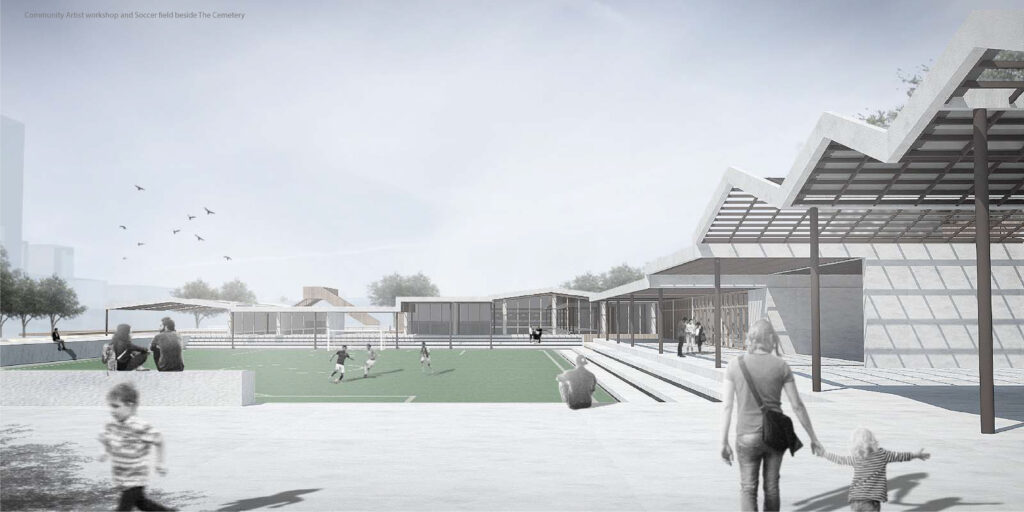
Project Statement
Interstitial space is a space in between one thing to another. And What is the role of interstitial space in Heritage-LED regeneration process? From my investigation and design research work, I found that urban interstitial spaces play an important role to support urban space around. In heritage-base area as my site where have many historical places, an interstitial space in between may contain issues of abandon space from the transition of time including informal settlement, lack of accessibility, isolating institute, informal usage, crime and security problem. All these issues are depending on urban facilities from the existing space. However, this space also has a potential to be the sharing space that all actors can involve some resources and gain benefits from it. This mean this space can encourage stakeholder all around to solve the problem inside together. Therefore, to dealing with the complicated relationship of stakeholders, heritage commons are the resource that have the identity of the local community together. This resource can use as a foundation to develop this space.
Social Housing with Campo Boario(Animal Stable Heritage)
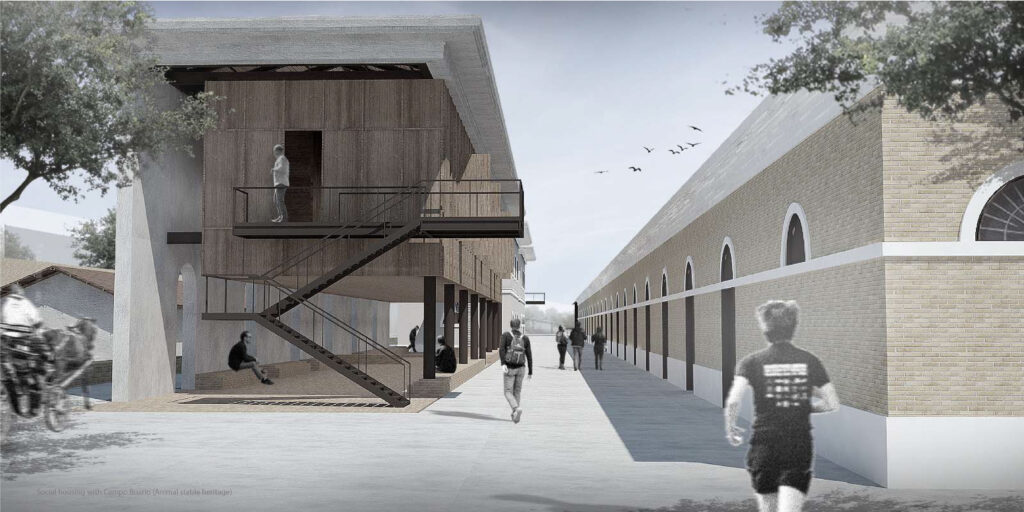
The strategy which I use to design to promote heritage-LED socio-spatial inclusive development are empowering current and potential urban commons while upgrading socio-spatial accessibility of them through the productive activities of local community due to the fact that existing career of local people mostly about creating product such as carpenter, blacksmith, vintner and furniture maker. These livelihoods lead to organising urban common in appropriate location. Developing proper functional space and dividing into two nodes that support each other and connect by pedestrian axis. One is Art and inspiring node that have the aim to give creativity to productive people. Another one is an artisan node which focus on skill trade and crafting node. As a group of social activities, people will have space to connect and help each other. From small group to bigger group, from one community to another community and from this district to public body.
Design Intervention Approach
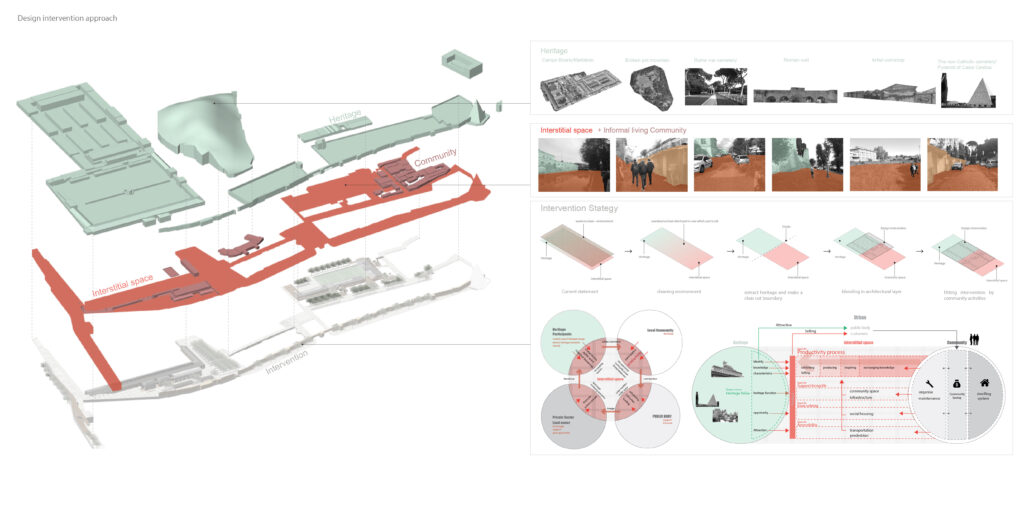
Design Intervention: Heritage passage of Testaccio
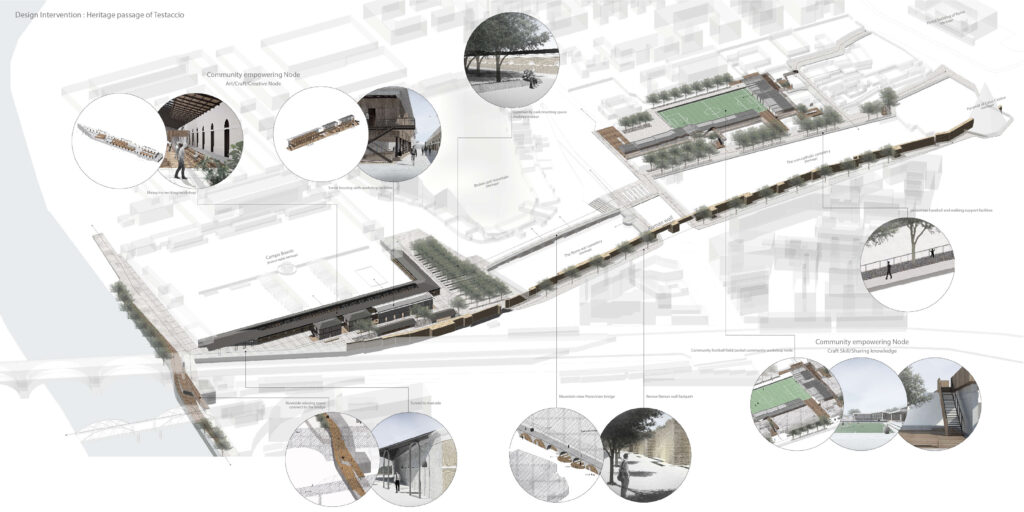
Design Visualization
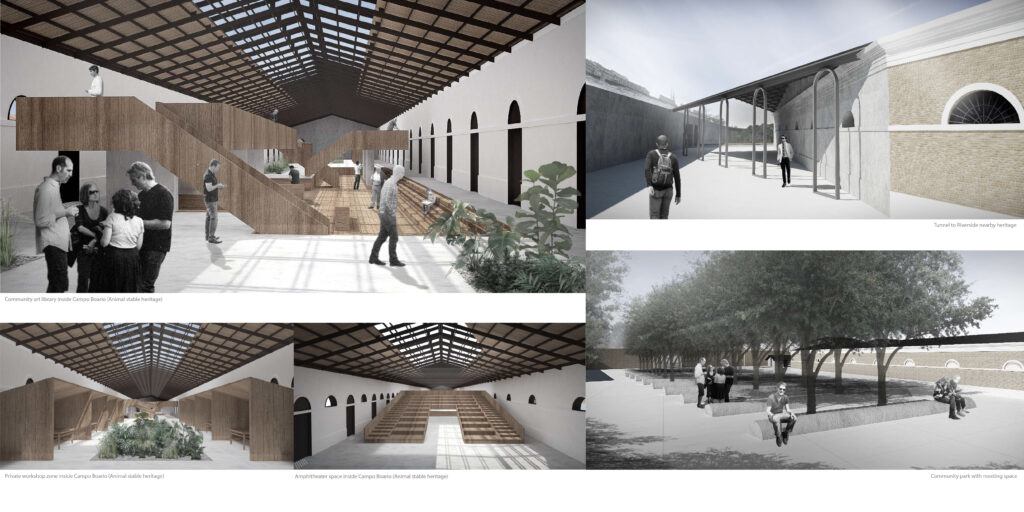
Personal Reflection
As one student of Design research unit D in MAAD, I would like to thank for all experience that I got from this unit. It is not only knowledge from architectural design research or urban common which are the main contents of this class but there also have a kind relationship from the unit leader (Giorgio) and all Unit D students that made this difficult course to be easier. Group study and field trips are really fun and I am very happy to study all along this year and think that I am lucky to meet all nice people from every student, tutors, staff, and reviewer from both in Cardiff and Rome (field trip).
